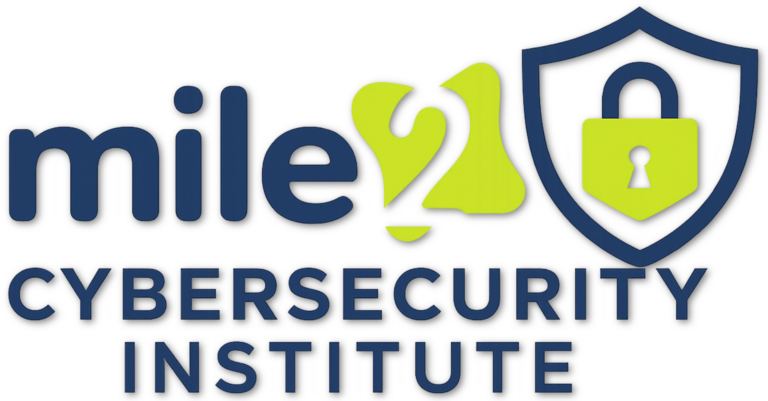OCU C)HT C Discussion Lesson 06
- This topic has 13 replies, 12 voices, and was last updated 5 months ago by
Caleb Kiser.
-
AuthorPosts
-
-
November 17, 2023 at 12:08 pm #91904
Manny Varela
KeymasterDiscuss what physical computer storage is and various storage methods.
-
July 21, 2025 at 5:43 pm #107269
Carlos Martes
ParticipantSo physical storage refers to hardware devices used to store digital data permanently or temporarily. It includes any tangible component that retains data even when the power is off. Below are several types of physical storage methods:
Hard Disk Drivers- Use spinning magnetic disks to store data. They offer large capacities and are cost effective.
Solid State Drives- Use flash memory with no moving parts, making them faster and more durable than HDDs.
Optical Storage- Includes CDs, DVDs, and Blu-rays that use laser technology to read or write data.
Flash Storage- Found in USB drives and memory cards. Can be portable and uses non volatile memory.
Last is Magnetic Tape- Used mainly for long term archival storage due to it’s reliability and capacity.
Each method varies in speed, durability, cost and capacity of course and is chosen based on specific data needs!-
July 23, 2025 at 10:51 am #107296
Isabelle Tubbs
ParticipantHi, Carlos. Nice work explaining the advantages of each storage method. Sometimes it is worth investing in a better type of storage because it can increase the speed, space, or reliability of the storage type. Keeping in mind what a user needs is important for knowing what options would work best for them.
-
July 28, 2025 at 7:00 pm #107360
Misty Stewart
ParticipantHi Carlos,
Thanks for the overview! You’ve laid out the key types of physical storage very clearly. I’d add that the choice between these methods often depends not just on technical specs but also on specific situations. It’s fascinating how these technologies coexist, each optimized for different needs. Each of these storage methods has its unique advantages and is chosen based on the specific needs of the user. The coexistence of these technologies highlights the diverse requirements of modern data storage, and the innovative solutions developed to meet them.
-
-
July 22, 2025 at 12:37 pm #107289
Isabelle Tubbs
ParticipantBecause computers can do many different tasks and have many components, the computer system needs a space to store the information to complete these processes and use its resources, like its hardware and software. A major way a computer stores this is through drives. Disk drives can be magnetic drives, which use a binary system, or solid state drives, which use flash memory chips. Additionally, it could be a binary drive which is a magnetic hard drive that has flash memory chips.
The way these drives are organized can vary, but RAID can offer some efficient options depending on a user’s needs. Some drives may be stored with striping, which splits the data. Others can use mirroring, which copies the data on each disk. Finally, it could be used with blocks, creating a more complex way of storing the data and allowing more fault tolerance. Some RAIDs can also use a combination of these methods.
An additional option for storage is optical drives. Compact disk drives, digital video disks, and Blu-ray are optical drives that I think most of us have used at some point. They contain data that can be used by the computer once the drive is connected.
-
July 23, 2025 at 4:38 pm #107300
Carlos Martes
ParticipantGreat post, Isabelle. I agree that RAID provides useful storage options, especially for improving performance and data protection. I’ve used both HDD and SSD, and it’s cool how flash memory has made systems faster. Optical drives are becoming rare, but they’re still helpful for reading older media formats.
-
-
July 25, 2025 at 7:31 pm #107320
James Settle
ParticipantPhysical computer storage refers to disk drives, RAID storage, optical drives, flash drives, memory cards or SD cards, as well as magnetic tape drives. Disk drives are usually magnetic hard disk drives, or solid-state drives. Magnetic hard disk drives contain plates/platters made of aluminum or glass that can be magnetized & demagnetized to store binary data in the form of zeros and ones. Solid state drives are non-volatile flash memory chips which store the same information. While both HDDs and SSDs can be housed internally and plugged into the motherboard, they can also be connected externally by a USB cable. You can acquire these drives in a 3.5” size, generally for desktops or 2.5” size, generally for laptops. Additionally solid-state drives are typically created for various expansion slots such as PCIe, NVMe and M.2. SSDs offered in these formats are usually much smaller than their 2.5” encasings but may come in these sizes for standard accommodations.
-
July 29, 2025 at 9:22 pm #107389
Caleb Kiser
ParticipantHi James,
I enjoyed reading your post. You did a good job explaining what physical computer storage refers to. I believe it’s essential for anyone entering the IT field to learn these concepts. All of these storage options play a big role for me at work. I work with a variety of media-related items, and proper storage is essential for ensuring that everything goes smoothly.
-
-
July 25, 2025 at 11:07 pm #107324
Caleb Kiser
ParticipantPhysical computer storage is where all your digital content actually lives: files, applications, operating systems, basically anything that needs to stick around even when the power’s off. There are a few main types of storage worth knowing. Hard drives (HDDs) use spinning disks and magnetic fields to store data. They’re affordable and hold a lot, but they’re slower and more prone to failure over time. Solid-state drives (SSDs) are way faster since they have no moving parts, and they’re also more durable, but usually cost more per gigabyte. You’ve also got flash storage like USB drives and SD cards—super handy and portable. Optical storage, like CDs and DVDs, used to be common but is slowly disappearing. Tape storage still exists too, mainly for large backups. Different connection methods like SATA, NVMe, and USB determine how fast and efficiently data moves. Understanding these options helps you know what’s best for different needs and setups.
-
July 28, 2025 at 5:22 pm #107354
Teisha Nolen
ParticipantHi Caleb!
Great post! You highlighted the key types of storage very clearly. It is important to remember that choosing the right storage isn’t just about capacity but also speed, durability, and even portability. Additionally, you have to take into account what types of things you are planning to do to further help with storage decisions. Great explanations!
-
-
July 27, 2025 at 9:49 pm #107327
Misty Stewart
ParticipantPhysical computer storage includes the hardware used to keep digital data, such as the operating system, applications, personal files, and multimedia. There are various types of physical storage, each with its own features and uses. Hard Disk Drives (HDDs) use spinning magnetic disks to read and write data. They offer large storage at a low cost but are slower and more prone to mechanical failure. Solid State Drives (SSDs) use flash memory, making them faster, more durable, and energy-efficient, but they are more expensive per gigabyte. Optical Discs, such as CDs, DVDs, and Blu-ray discs, use laser technology to store data. They are often used for media distribution and backup but have limited capacity and slower speeds. USB Flash Drives are portable, use flash memory, and connect via USB ports, making them convenient for data transfer, but they have lower storage capacities. Memory Cards, used in cameras and smartphones, also use flash memory and come in formats like SD and microSD cards, providing expandable storage. Network Attached Storage (NAS) devices connect to a network, allowing multiple users to access and share data, commonly used for centralized storage and backup. Cloud Storage involves storing data on remote servers accessed via the internet, offering accessibility from anywhere and used for backup and collaboration.
-
July 27, 2025 at 10:45 pm #107330
James Settle
ParticipantGood job bringing up network attached storage and cloud storage Misty. I was thinking only of local storage connected to the physical computer in answer to this question, however I think it is important to mention other methods of storage as well. Excellent post.
-
-
July 28, 2025 at 4:58 pm #107353
Teisha Nolen
ParticipantWhen it comes to physical computer storage, there are several options available, depending on what you are trying to accomplish. Disk Drives, whether hard disk (HDD) or solid-state (SSD), are the primary options for storing items such as operating systems, apps, and files. HDDs rely on spinning disks and are great for large, affordable storage. SSDs, on the other hand, are faster and more durable because they have no moving parts.
RAID storage combines multiple drives into one system for better speed, redundancy, or both. RAID setups such as RAID 1 (mirroring) or RAID 5 (striping with parity) are often used in servers or critical data environments.
Optical drives, like CD, DVD, and Blu-ray readers, use lasers to access data—though these are less common today. Then there are hybrid drives, which mix HDD and SSD technologies to balance speed and capacity.
For connections, SCSI was popular in high-performance systems but has mostly been replaced by faster interfaces like SATA and NVMe. SATA is still used in many systems, while NVMe SSDs connect through PCIe slots for increased speed. New SCSI devices obtain higher speeds with serial connections.
Storage options should be chosen based on your individual needs—speed, capacity, durability, or fault tolerance.-
July 28, 2025 at 7:16 pm #107361
Misty Stewart
ParticipantHi Teisha,
You’ve summed up the essentials of physical computer storage well! While optical media like CDs and DVDs are becoming less common, they still serve a purpose for archiving or distributing physical content. Tape storage, though often overlooked, remains a reliable solution in enterprise environments for backing up large volumes of data over the long term. You’re absolutely right—connection types like SATA (slower but common), NVMe (super-fast, especially for SSDs), and USB (versatile and portable) play a big role in how efficiently data moves.
-
-
-
AuthorPosts
- You must be logged in to reply to this topic.


